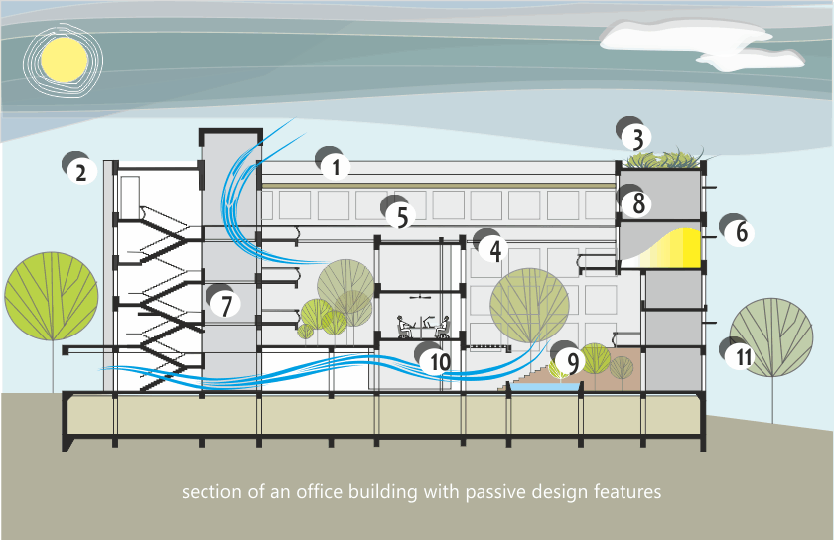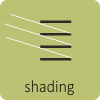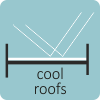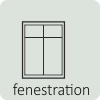Implementation of sound passive design principles is the first stepping stone on the path to zero. NZEBs must sharply reduce energy use, and only then use renewable energy systems to meet the residual energy needs. Passive design strategies are features innate to the form and design of a building that channelize available natural resources to ensure thermal comfort. These climate specific approaches based on sun, wind, light and micro-climatic considerations can be employed to design energy efficient buildings.
Extreme energy efficient must be at the core of Net Zero Energy Buildings. NZEBs must harness all potential advantages from the site, surroundings, and should be designed for the climate. The decisions about building form, orientation, shading, and ventilation, taken during the early design stage have the most significant impact on the energy use of the building. Passive design strategies aim at achieving thermal comfort using as little active cooling and heating as possible. This means reducing cooling requirement during the summer and heating in the winter through appropriate orientation, external shading, appropriate amount of glazing, and natural ventilation.
Drastically reducing, or even eliminating, the need for artificial lighting through filtered, indirect, glare-free daylight is imperative for sustainable buildings. Daylighting not only reduces the energy needed for lighting and air-conditioning, but is also linked to health and well-being of the occupants.
The skin of the building – walls, windows, and the roof – moderates the effect of the climate. Selection of building envelope with appropriate thermal mass, insulation, and color based on climate and functional requirements can reduce the number of hours when heating or cooling is required to maintain comfort.
Using evaporative cooling through water bodies and evaporative coolers can further reduce the requirement for air conditioning, especially during the hot and dry periods. It is now possible to seamlessly integrate evaporative cooling with conventional air conditioning systems. Ceiling fans have always been a part of homes in India, often being the only source of comfort in the summer. They are now making a well-deserved come back in commercial buildings as well. Most new energy efficient buildings incorporate ceiling fans to enhance thermal comfort and reduce energy use in cooling.
An NZEB will only be cost-effective if all the passive strategies, all of which come at no-cost or low-cost, are incorporated in its design and construction.



















